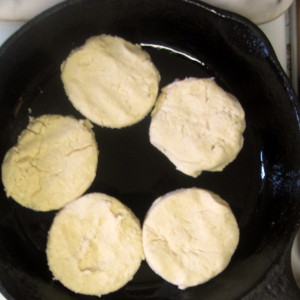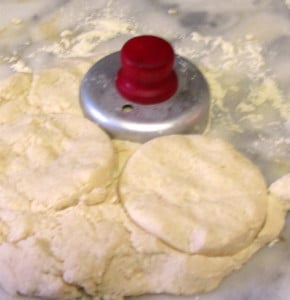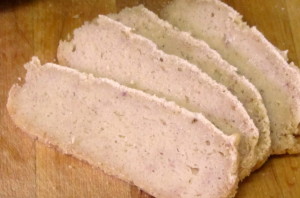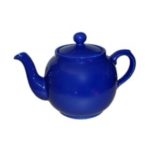“But I Followed the Recipe!”

When I was a baby, we lived in Denmark for about a year, while my father was there on business. We sublet an apartment in a suburban two family house which had an apple tree in the yard, and our wonderful, welcoming landlady told my mother to take and use as many apples as she would like. So Mom made applesauce for me, she made apple cake, and she made pie. She had no rolling pin, so she rolled the crusts out with a milk bottle – said they all had the logo of the dairy stamped on them!
And she made the best pie crusts of her life. Tender and flaky, she told me years later, long after she had given up on making crusts that alternated between tough and mushy. Nothing she made came close to the ones she had made in Denmark – was there magic in that milk bottle?
As an adult, I remembered this when I lived in New Jersey, and would go with friends to a pick-your-own apple orchard. Like my mother before me, I made some of that bounty into pies – and I had extremely uneven results. One day my crust would be perfect – light and flaky, and a joy. The next week it would be nearly inedible. Even though I used the exact same recipe!
Years later, I understand more about cooking. And variables. My first idea about Mom’s pie was – Danish butter. Danish butter is different from American butter. It generally has less moisture, and higher butterfat content. It is often also cultured, which makes it slightly acidic. Well, pastry recipes always tell you not to add too much moisture – and some call for a few drops of vinegar, because the acid helps the texture… OK, I’m onto something. It didn’t explain my experience, though.

I have continued to learn, and research, and experiment – and try to solve the problem of my terrible pastry. (I bake fabulous bread… but my biscuits could be used as cobblestones, my pie crust as roofing tiles.) I learned to lighten my touch, to avoid awakening the gluten, to use pastry flour instead of AP flour… And I finally came face to face with another variable, that people rarely discuss. Ambient temperature.
Oh. That explains so much. Our house in Copenhagen was much cooler than our steam heated apartments in New York City… And then, my apartment in New Jersey was usually downright hot – the super kept the building warm for several elderly residents – but in the Fall (when I had the apples) we’d sometimes get chilly just before the furnace kicked in. I bet I made the good pastry when the furnace was not running, the bad when it was. Wow.
So I’ve learned to look for variables, including the ones the cookbooks don’t always mention. People who live in the mountains know to adjust for altitude – but do any of us think to adjust for humidity? (Bread recipes tell you to, but nothing else does…)
Do you know how your flour compares to that of the writer? American AP flour is harder wheat, generally higher in gluten than European (another variable in Mom’s pie crusts…) so our cakes may be tough and their breads may not rise properly, when we swap recipes. Whole wheat is oily from the wheat germ, so won’t give a crisp shattering crust. Aside from all the other adjustments with gluten free flours, they don’t seem to brown the way wheat does, which is a problem if that’s always been your sign that something is fully cooked.

What about my tools? I’m looking at a biscuit recipe that tells me to pat out the dough to 1 1/2 inches thick. I have my grandmother’s biscuit cutter, and it’s only 1/2 inch high… I’m going to get a different result. Do I have the nice heavy even-heating pan the recipe recommends? How does that affect me?
I don’t mean to frighten you – it is absolutely possible to cook well despite all this. I am more reassuring you – if a recipe doesn’t work the way you expected, it may not be either you or the recipe, but a variable you did not anticipate. This is one reason that many excellent and experienced cooks don’t seem to follow recipes – they are automatically making the adjustments they’ve learned they need in their own kitchens. (You don’t see the years of experience, following recipes, that taught them this.)
Look at your cooking. What doesn’t work, and – just as important – what does? My biscuits are like cobblestones, but my bread rises like a dream. Oh – I’m heavy handed and my kitchen is hot… Your stews come out tough. Does your burner go low enough? Would it work better in a slow cooker? Your stir fries are soggy. Does your burner get hot enough? You always make a great meringue, but crumbly cookies. I bet you’re in a dry climate, and your cookies need a touch more liquid to hold together.
Right now, I’m very conscious of this, because I am, in fact, not following the recipes… I am starting to experiment with gluten free baking (beyond the muffins that have been my mainstay throughout this process…) Obviously my fine collection of books about bread use flour with gluten – they’re put aside for the moment. But most gluten free recipes out there are mimicking white bread, and using a lot of starch to do so – that’s not what I want. And I just may be one of the people with a bad reaction to xanthan gum… at any rate, I reacted badly the one time I tried a commercial bread that came highly recommended. (Naturally. My body never does anything the easy way.) I thought that bread was too starchy anyway…

Well – if I’m going to vary flour and starch content and binder, I need to control for other factors. The one time I tried bread, my normally warm kitchen was absolutely chilly – every time I touched the pan the dough was rising in it felt as if it had come out of the fridge. (I was walking around the house with a bread pan in one hand, a thermometer in the other…) So, when the bread didn’t rise… was it the temperature, or my recipe? Or (probably) some combination? (Look at those slices. The top of the loaf dried out… that will prevent rising.)
The biscuits in the pictures above are made using (mostly) someone else’s recipe – and definitely her directions. If you have trouble with biscuits (with or without gluten, I’d say) take a look at the method of the Gluten Free Girl. (She uses the flour blend she has just started marketing – but she also tells you elsewhere on the site how to make it yourself.) I used her technique, tinkered with the flour (I want all whole grain – which she also talks about…) substituted kefir (because I have it) for the buttermilk, used a biscuit cutter that made flatter biscuits – and still got some of the best biscuits I’ve ever made. I suspect that actually following her recipe would yield remarkable ones…
I love her site because she talks about cooking. She doesn’t just say “Do This” – she tells you what This does, why she wants that result, often how she found out how to get that result, and sometimes even what to do if you want a different result. She has given me the tools, and confidence, to go into this process without fear.
And this recipe is All About controlling temperature… which brought me back to my mom’s pie crust. When I create recipes, when I follow recipes, especially if I have trouble with recipes, I need to look at the variables.
Because, if I figure them out, and adapt for them, the recipe will, in fact, work.
